Here’s the Vuelta a España guide with all the stage profiles and more on one page. It’s got all the technical information for the different points competitions, time bonuses, time cuts and more in case you need to hand.
Throughout the race you’ll find this page via the menu at the top of the page or visit inrng.com/vuelta
Route Summary
A trek to Utrecht where the race begins with a 23.3km team time trial and then two flat stages. Mid-way in the race there’s a flat 30.9km time trial. Otherwise there’s the now familiar mix of summit finishes, nine in total where some can be just handful of kilometres long but are viciously steep, others last for ages on wide roads. Like the Giro and Tour there are slim pickings for the sprinters, especially if they struggle with a climb mid-stage or an uphill finish.
Stage 1 – Friday 19 August
The team time trial is back, the first appearance in a grand tour since the 2019 Vuelta. As always a tricky exercise loved by the winners and hated by the losers because if things go wrong it’s down to everyone. The stage should allow the big teams to pull out a lead, big in both senses as those packed with tall rouleurs, and those with budgets.
Stage 2 – Saturday 20 August
The Alto de Amerongse looms over today’s stage, the hardest point could be the corner into the foot of the climb but the road after is wide enough to move up a few places. It should allow someone to take the mountains jersey before a sprint finish in Utrecht.
Stage 3 – Sunday 21 August
Another sprint stage, this time nudging the Belgian border, especially in the frontier town of Baarle-Nassau where the border famously cuts across cafe terraces and through a supermarket.
Stage 4 – Tuesday 23 August
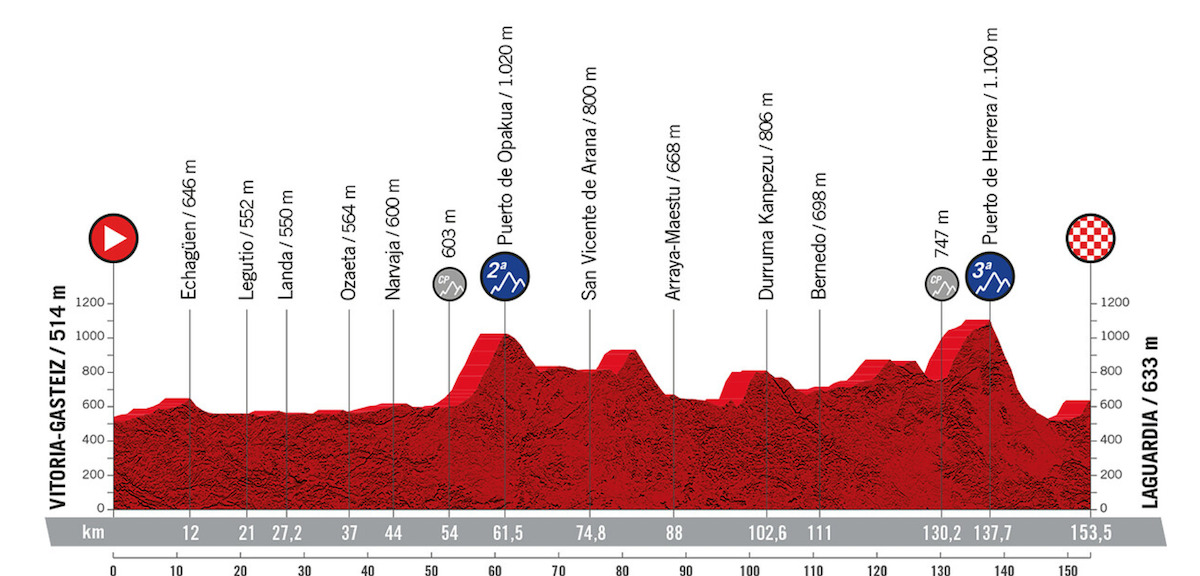
Stage 5 – Wednesday 24 August

Stage 6 – Thursday 25 August

Stage 7 – Friday 26 August
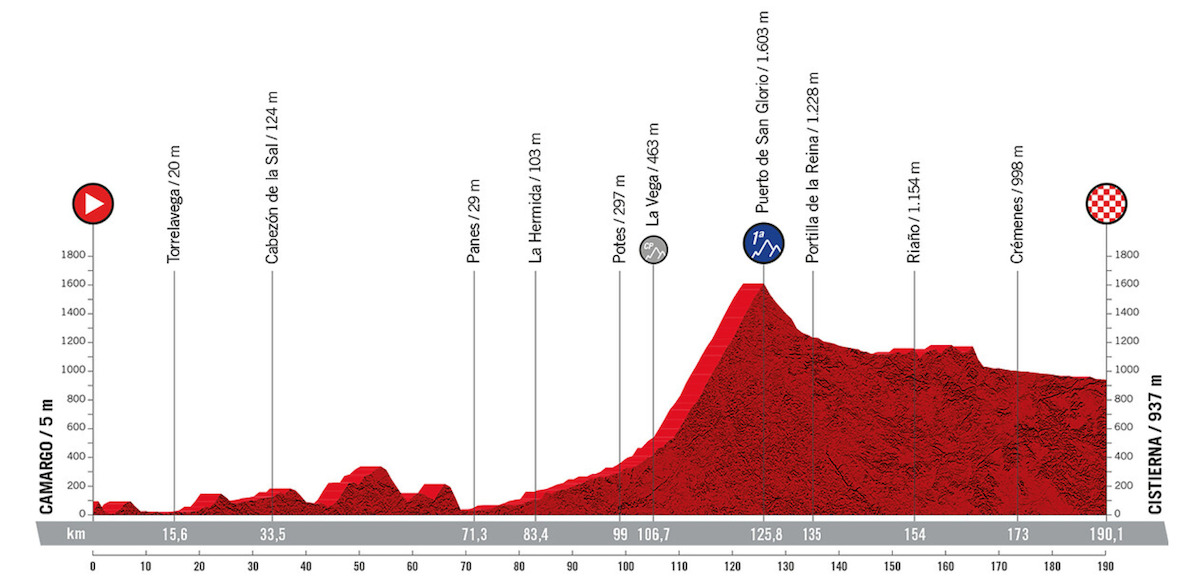
Stage 8 – Saturday 27 August
A tough mountain stage. There’s a climb to start which is tough but could be a small mercy if it’s where the breakaway can form. Another discovery and tarmacked in 2019, the Fancuaya sounds like an insult, it’ll have some swearing as they tackle the irregular slope and double-digit gradients of what was once a shepherd’s route up to the pastures.
Stage 9 – Sunday 28 August

Stage 10 – Tuesday 30 August
After the rest day in Alicante, where the GC contenders and TT specialists will spend their rest day on their TT bikes, it’s a 30km TT on big open roads. It suits the specialists and will put the climbers on the back foot.
Stage 11 – Wednesday 31 August
A start outside the giant industrial producer of salchichón that sponsors the race and then a parade down to the coast over many winter training roads used by teams in the off-season before a finish on the salty sea flats.
Stage 12 Thursday 1 September
More Cosa del Sol coastal winter training roads and then the big climb out of Estepona, the regular ramp of the Peñas Blancas.
Stage 13 – Friday 2 September
A breakaway or a sprint stage? By now there’s plenty of riders willing to barge clear and if the road is lumpy, the hard part is the uphill finish in Montilla, it’s too much for the bulkier sprinters.
Stage 14 – Saturday 3 September
The Pandera climb returns, it’s a backroad to a military communications base and has been used five times this century, the last winner was Rafał Majka in 2017.
Stage 15 – Sunday 4 September
Another day, another big climb. This is the Sierra Nevada climb and all the way to Sol y Nieve ski resort and then beyond, a climb known to many who have stayed at the Sierra Nevada’s Centro de Alto Rendimiento as part of their altitude camps. The race wanted to go higher and reach 2,850m but there were protests from ecologists and the local governor backed them. So it’s the Hoya de la Mora finish at “only” 2,500m.
Stage 16 – Tuesday 6 September
Part sprint stage, part active recovery ride for the GC contenders, unless the weather intervenes.
Stage 17 – Wednesday 7 September
Another quintessential Vuelta stage where the punchy uphill finish should help pick the winner from the breakaway.
Stage 18 – Thursday 8 September
Two climbs of the Alto de Piornal await but it’s not a circuit finish, the race climbs up different sides of the same mountain. For once it’s not so steep, the road is wide, regular and often no more a 5% slope.
Stage 19 – Friday 9 September
A quick dash and this time a circuit race with two laps of a 62km course via the Puerto del Piélago. The climb is not fierce, it goes up in three parts with small descents in between and apart from some 8% after the second descent, it’s a gentle 5% most of the way.
Stage 20 – Saturday 10 September
It’s not identical to 2015 but does feature the same climbs of La Morcuera and Navacerrada where Fabio Aru and his Astana team finally toppled Tom Dumoulin.
Stage 21 – Sunday 11 September
The traditional Madrid parade and the bait to encourage sprinters to stay in the race.
Time bonuses
- There are 10-6-4 second time bonuses at the finish line of all the stages, apart from time trials
- There are also 3-2-1 seconds at the intermediate sprints for stages 2, 3, 7, 11, 12, 13, 16, 17, 19 and 21.
- New for 2022 is the addition of 3-2-1 second time bonuses atop climbs in the race. These are Stage 4. Puerto de Herrera; Stage 5. Alto del Vivero (second time up); Stage 6. Collada de Brenes; Stage 8. Puerto de Tenebreo; Stage 9. La Campa; Stage 14. Puerto de Los Villares; Stage 15. Alto del Purche ; Stage 18. Alto de Piornal (1st category – first lap) and Stage 20. Puerto de la Morcuera. As it’s only for three seconds it’s hard to see this weighing on the race but now you know

Overall classification
A red jersey sponsored by Carrefour, a supermarket.
Points competition
Points are awarded at the finish line and at the intermediate points in the stage and the rider with the most points wears the jersey. It is sponsored by Skoda, a car manufacturer
- Stages 2,3,13,16,21: 50-30-20-18-16-14-12-10-8-7-6-5-4-3 and 2 points for the first 15 riders
- Stages 4,5,7,11,17,19: 30-25-22-19-17-15-13-11-9-7-6- 5-4-3-2 points
- Stages 6,8,9,10, 12,14,15,18,20 : 20-17-15-13-11-10-9-8-7-6-5-4-3-2-1 points
- Stage 10:
- Intermediate sprints: 20-17-15-13-11-10 points
The scale is almost identical to the Tour de France but it’s the stages that change with fewer dragstrip sprint finishes where 50 points await.
Mountains competition
Points are awarded at the top of categorised climbs and mountain passes, with these graded from the easier 4th category to the 1st category and the special Cima Alberto Fernandez for the Hoya de la Mora high point of the race. Again the rider with the most points wears the polka-dot jersey. It is sponsored by Loterias y Apuestas del Estado, the state lottery
- Cima Fernandez: 20-15-12-10-8-6-4-2 points
- Category 1 climbs (14 in total): 10-8-6-4-2-1 points
- Category 2 (14): 5-3-1 points
- Category 3 (11): 3-2-1 points
- Category 4 (1): 2-1 points
Best young rider
This is awarded on the same basis as the red jersey, except the rider must be born after 1 January 1997, ie aged 25 or under and this year over 40 riders are eligible. It is sponsored by Plenitude, a gas and energy company.
3km rule
In the event of a crash or mechanical inside the final 3km a rider can be credited with the same time as the others they were with, except on Stages 6, 8, 9, 12, 14, 15, 17, 18 and 20.
Sprint stage rule
For Stages 2,3,7,11,13 and 21 the three second rule applies.
Time cuts

Stages are given a rating from 1-6, look up the stage in question in the table above. Then see the average speed for the stage winner and apply the corresponding percentage.
TV coverage and the unmissable stages
Apart from the first and last day, all stages should finish around 5.30pm CEST. Not all are live from start to finish but the Vuelta can be consumed differently on television, you can often tune in for the final hour or just the final climb and catch most of the action. This isn’t to push you away from the whole race, it’s more how it is designed with action on many days but perhaps not action all day.
- Stage 2 for the first sprint, a hectic day
- Stage 4 has a lively uphill finish
- Stage 6 is the first summit finish
- Stage 8 for another summit finish
- Stage 9 for the hardest summit finish so far
- Stage 14 for… yes another summit finish
- Stage 15 is the giant Sierra Nevada finish
- Stage 18 is a tricky stage that should see action in the breakaway and the GC
- Stage 19 as the short mountain sprint stage
- Stage 20 as the last chance to win the overall

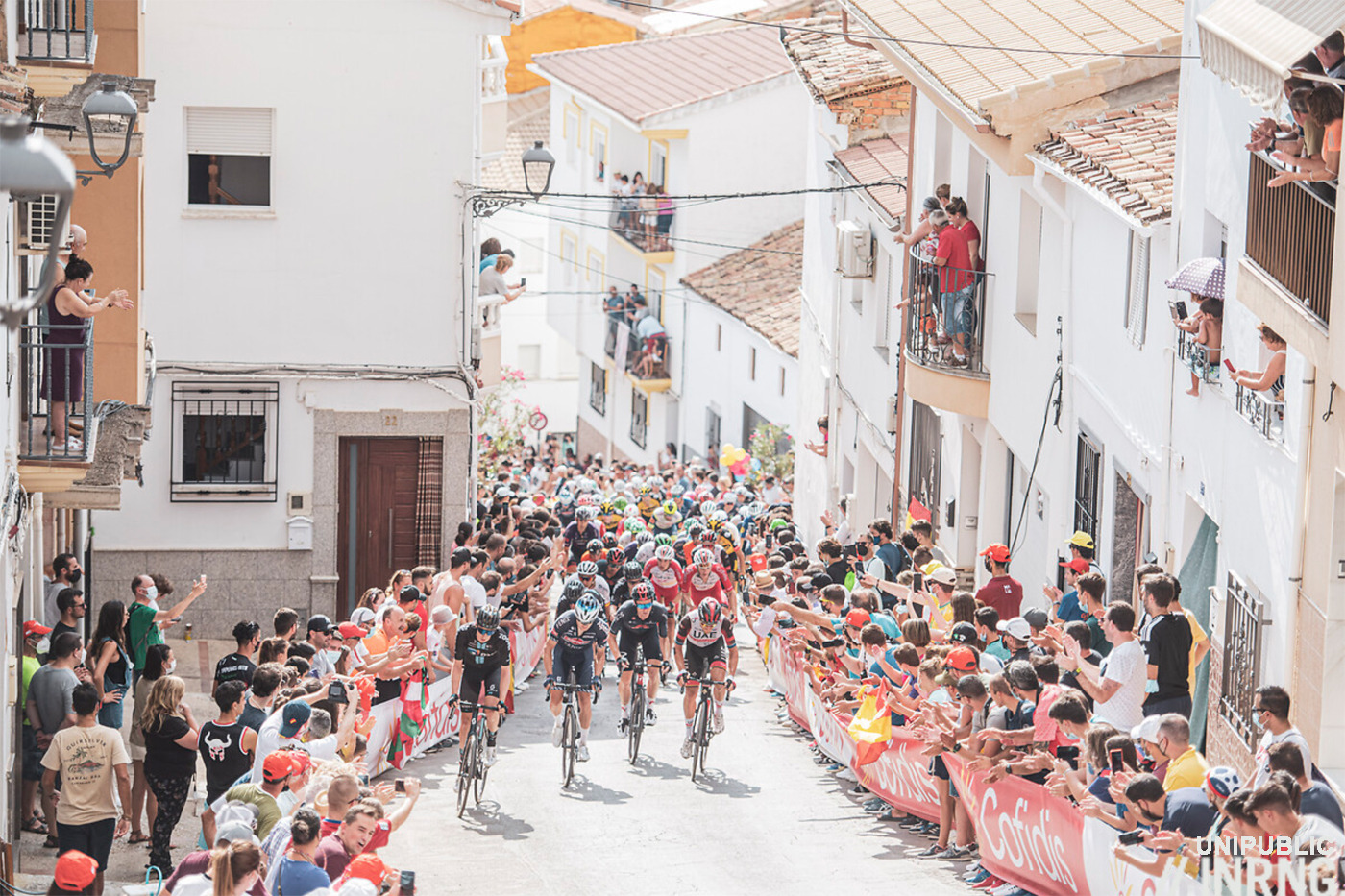

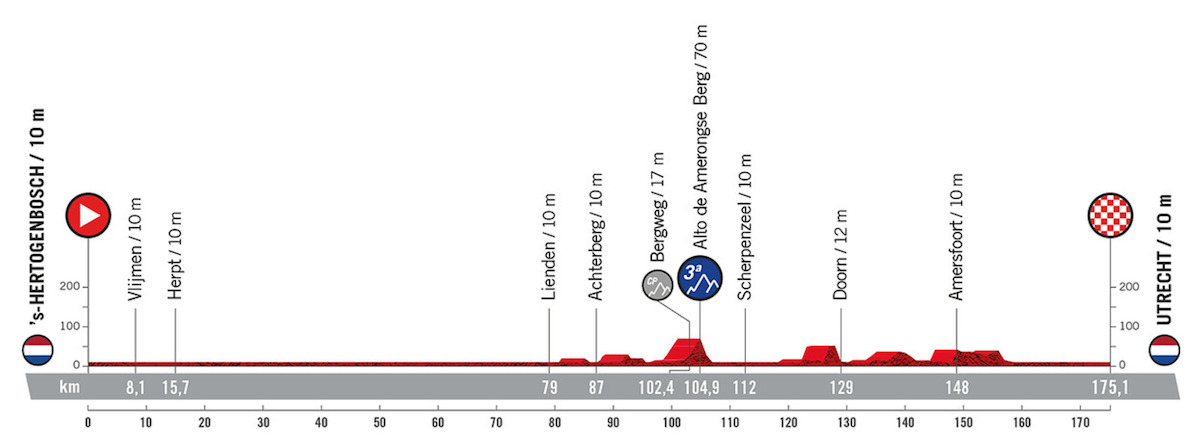

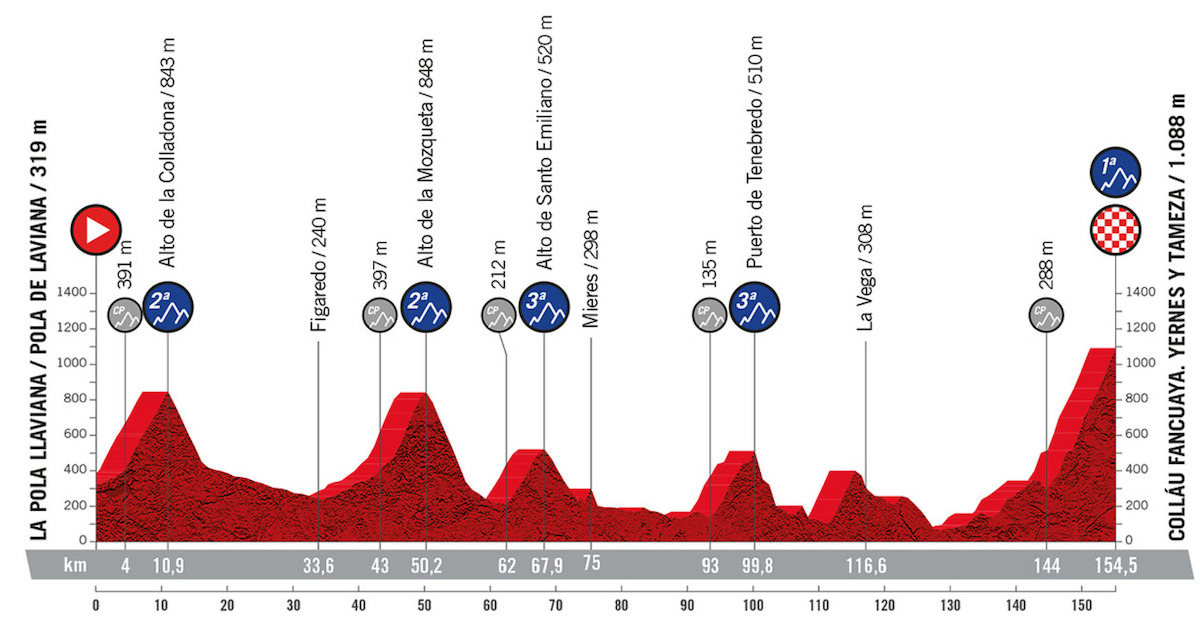


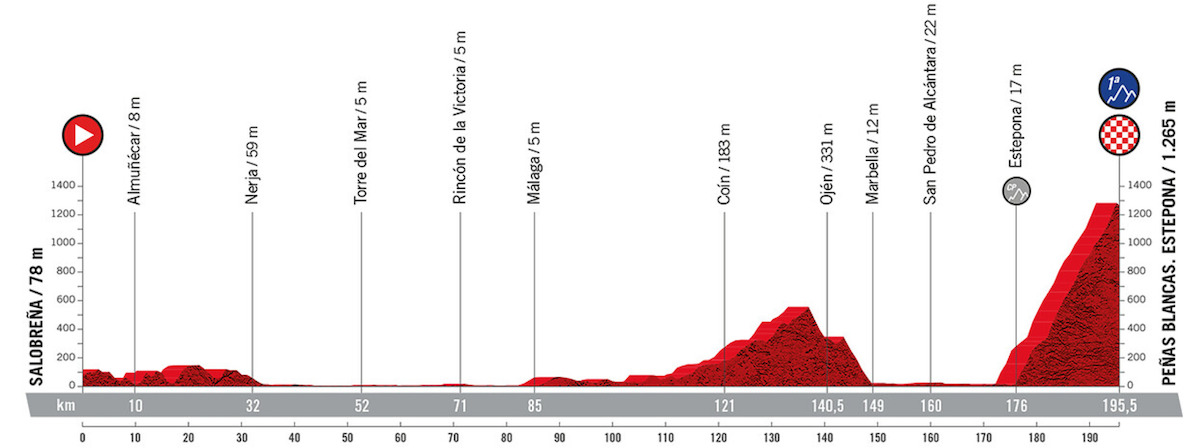
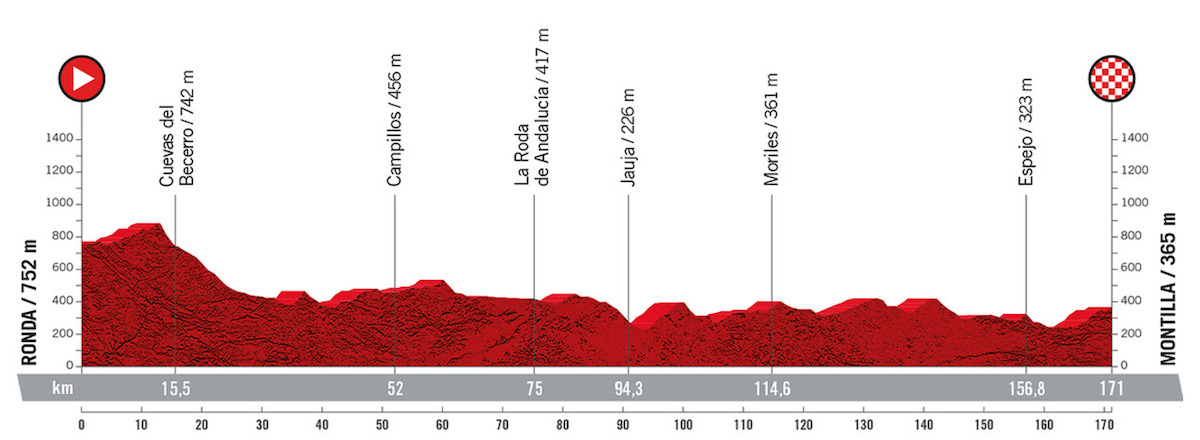
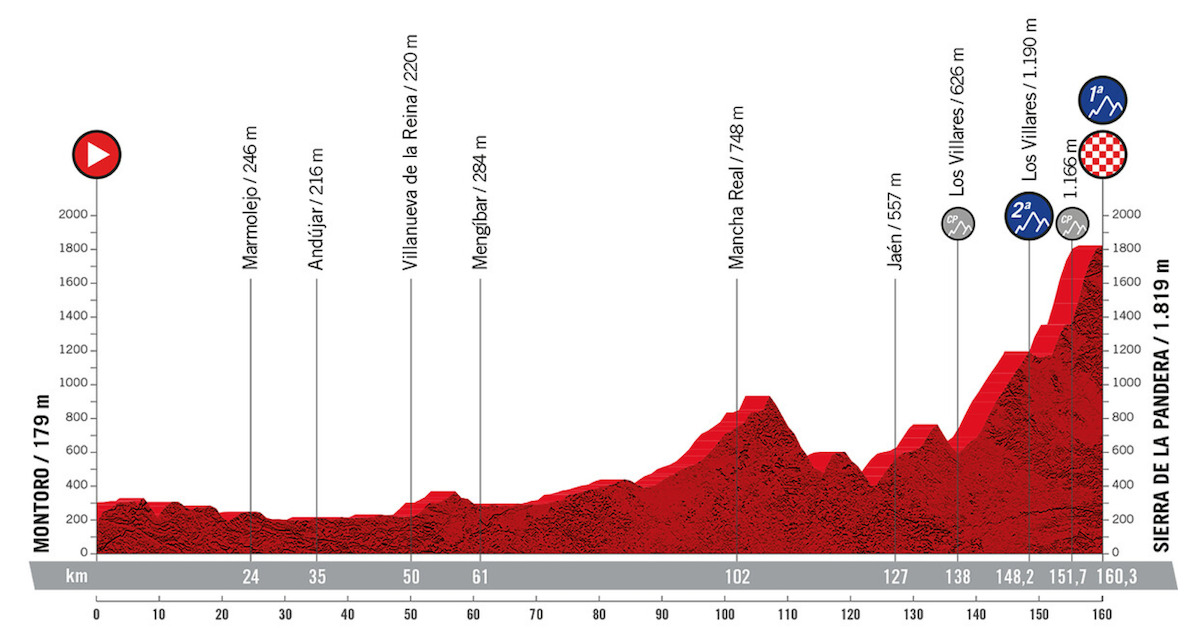
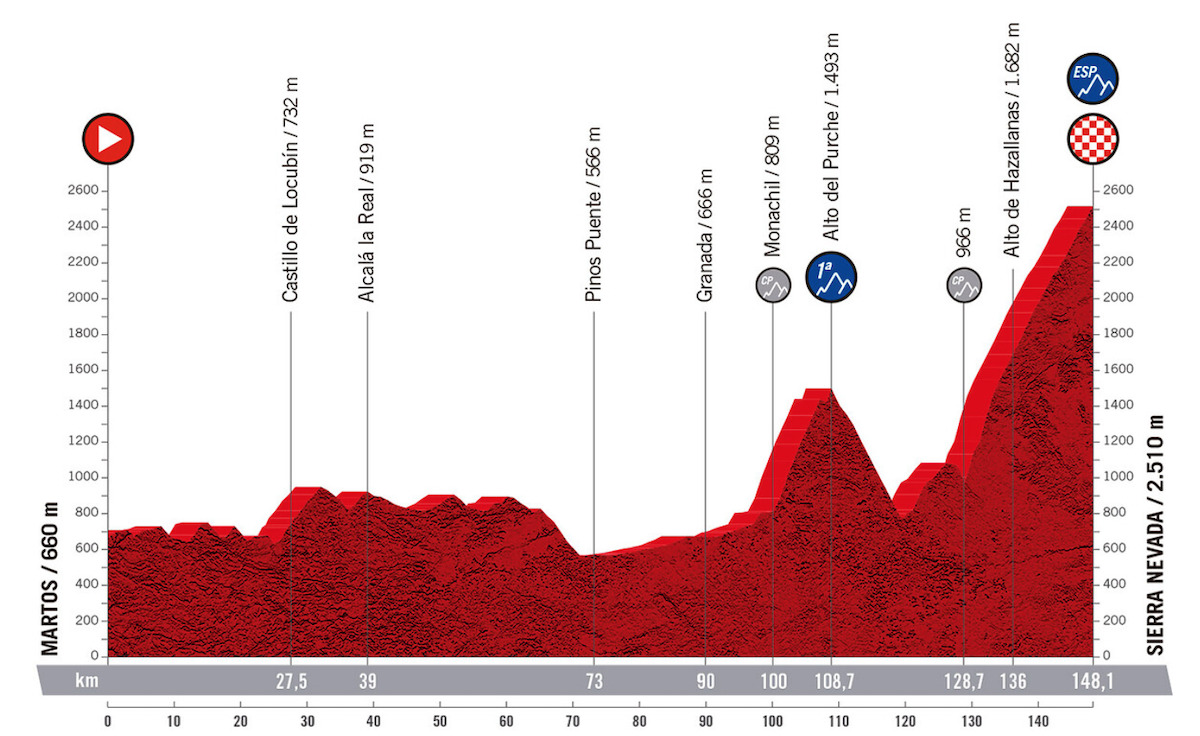
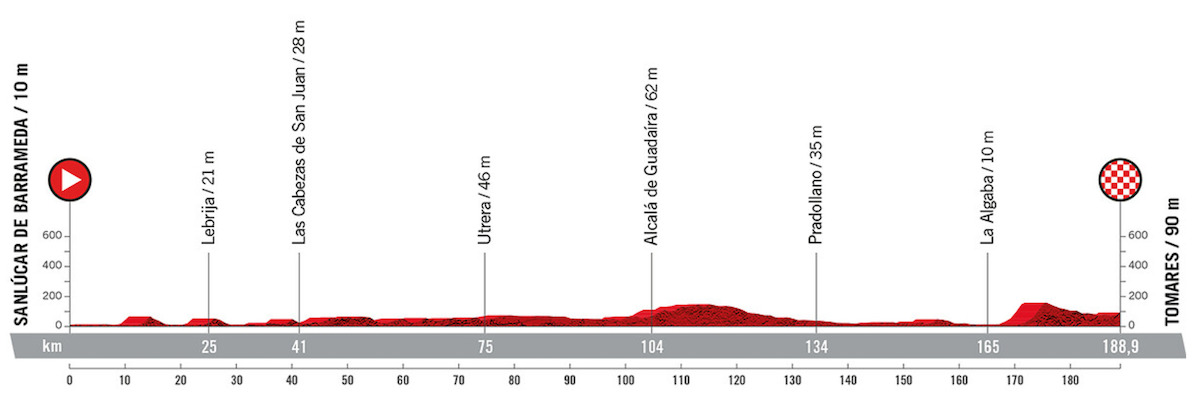
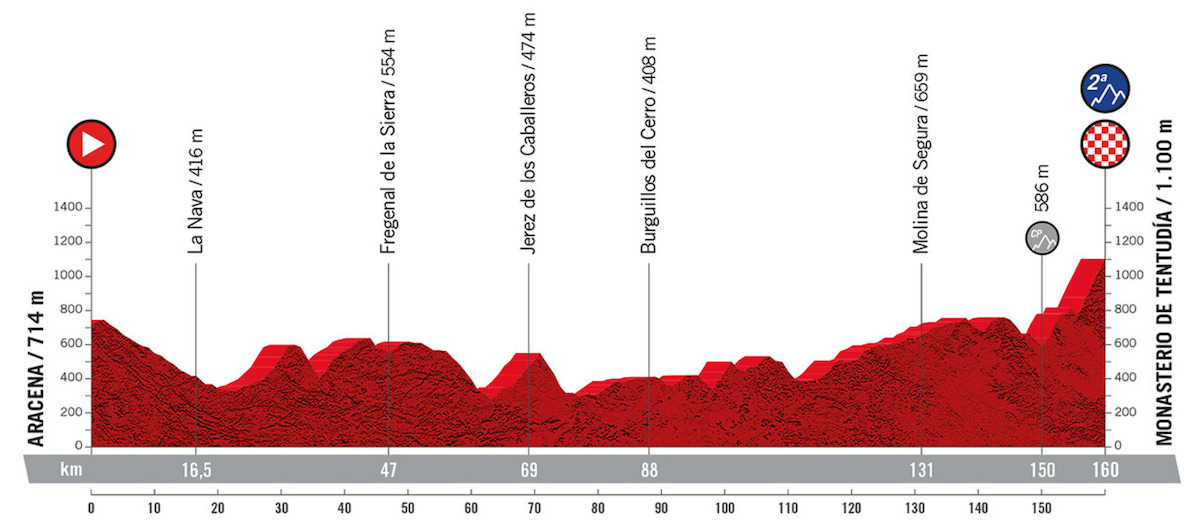
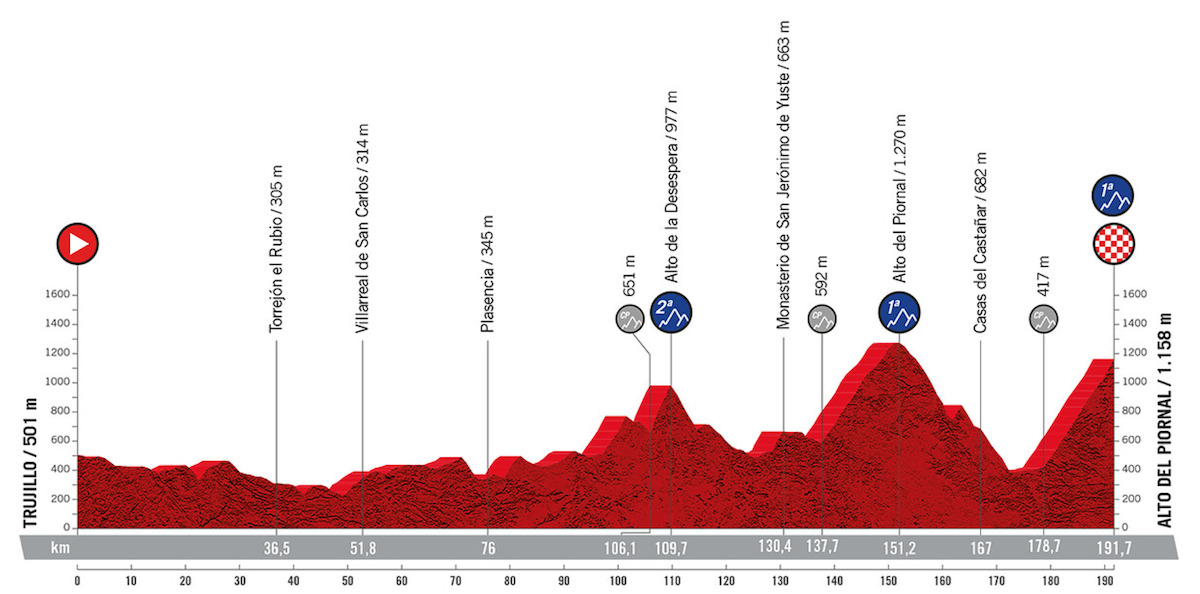
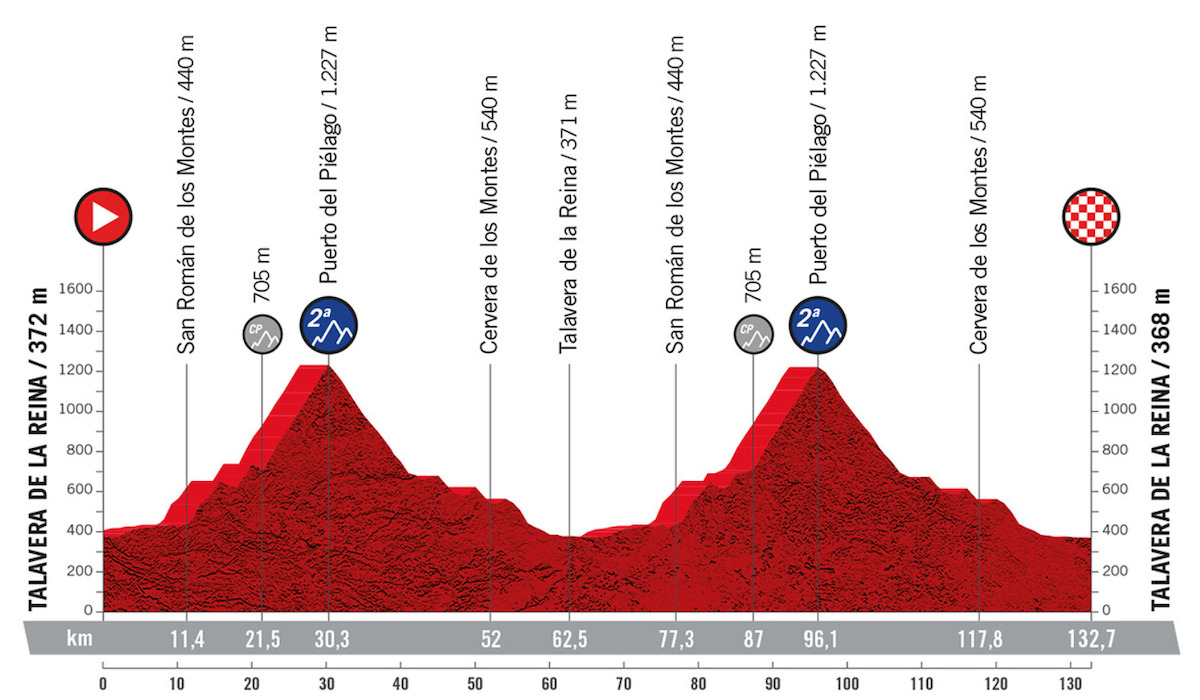
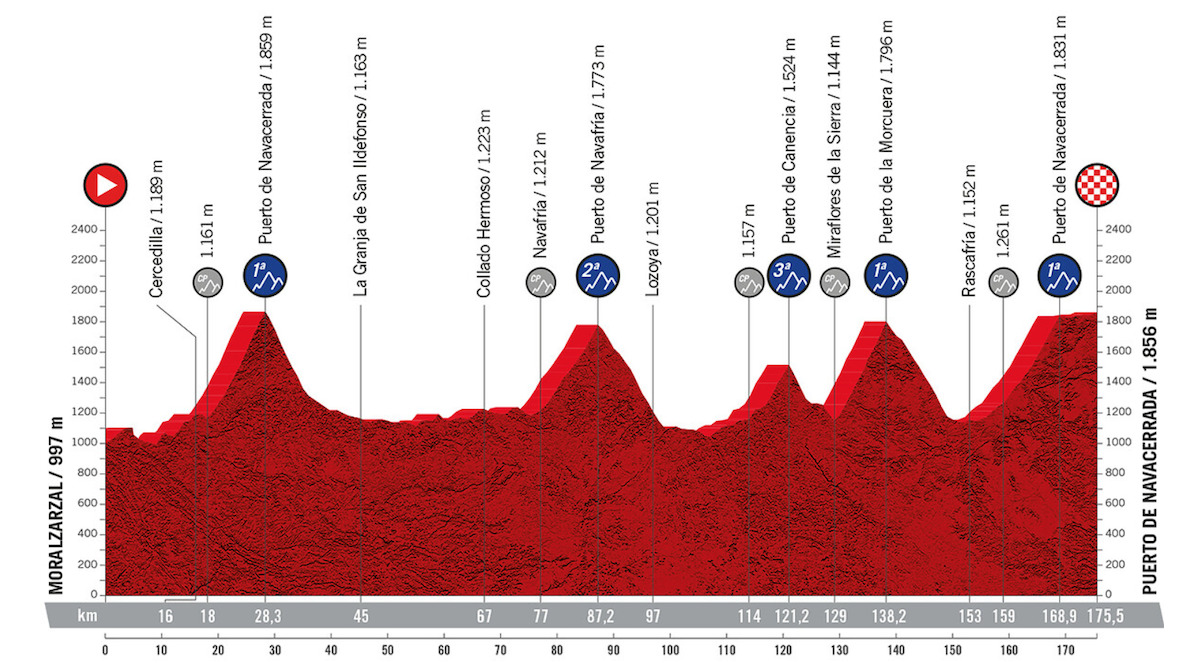
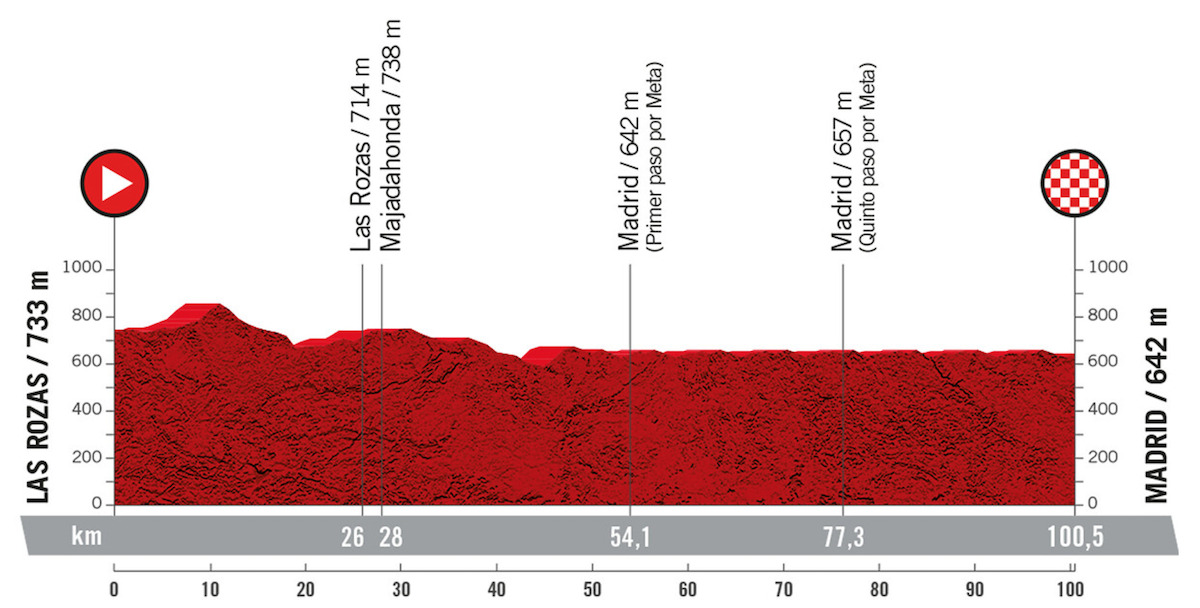
Even with the distance of a few years, climbing the Sierra de la Pandera whilst on holiday remains my most questionable use of leisure time. Will be watching Stage 14 with interest and horror.
Thanks for the details on the points. Small correction in the “Unmissable stages” – 15 is the Sierra Nevada, not 16
No promotion/relegation update today?
No, the UCI haven’t published rankings for this week, perhaps someone in Aigle is away on holiday, or tomorrow.
You don’t think you’ve been rumbled by them? “Not for publication” …
Hope not. And can’t see why they don’t join the dots as you do.
Maybe it’s taking them a bit of time to recalculate Arkea’s points, following today’s news!?
Well, it’s only the GC and two stages, 7th and 11th. But of course everyone who finished below Quintana now climbs up, and so their points, too, must be recalculated…
Really looking forward to this year’s Vuelta, although it feels like it doesn’t really start until Tuesday 23rd. I know all the financial arguments but still not a fan of GTs having starts so far away from home.
I’m never much of a fan of foreign starts, especially when it’s so far they need air travel… then I see the crowds and the joy it brings. It’ll be interesting to see how things are in Utrecht as it’s had the Tour and Giro already, any signs of fatigue?
Yeah, Denmark for this year’s Tour was spectacular but the stages can feel a bit inconsequential, ultimately. Hope anyone roadside enjoys it but I’m looking forward to the Vuelta reaching Spain.
I live in Utrecht, everybody is a lot less exited as compared to the tour.
Team time trial will pass some more quiet parts of the city, but overall I guess it will be crowded no matter what…
And probably on Saturday a lot of people, me included, will be on the Alto de Amerongse Berg, a whopping 69 meters above sea level.
Hi! If you remember Daily Diaz from a few years ago, here are some tips for stages 1-3. Utrecht is where the treaty was signed in the 18th century that gave Gibraltar to the English. S’Hertogenbosch is where Medieval painter “el Bosco” was born, he painted the Garden of Earthly Delights, which you can visit at the Prado museum in Madrid. Breda features in one of Diego Velázquez’s most famous paintings, the Surrender of Breda, remembering a battle in the 17th century. Those are three good connections with Spanish history!
Fond memories of the cultural input.
When they had the presentation for the start in Utrecht they had a show on stage where actors recreated the scene from the painting (pictures at https://twitter.com/inrng/status/1471546523871854592)
I must admit I was hoping they’d re-enacted Bosch’s Garden of Earthly Delights
haha, that would be something!
Great to see the Vuelta tagged on INRNG!
About Utrecht: The last depart was a great succes so they do it again
++2. Welcome back INRNG to the second best grand tour of the year. first come the Giro of course
ok, vamos!
who will be the best dialled-in team on Saturday?
will Alaphilippe illuminate the race until the Pico Jano, or possibly beyond?
any thought?
Great to see a Vuelta preview! Does this mean we’ll be treated to daily stage previews for the next 3 weeks (he asked, with a hopeful glint in his eye)?
No, I don’t know the roads well enough to do it justice, plus have done all the classics, two grand tours and other stage races. Will comment on the race if things are happening and there will be a general preview of the contenders on here soon.
Thanks for the pre-race round up. Big question is Roglic’s fitness and will Yates manage to make it through to the end. Stage 19 seems to be another crazy short stage.
Given they famously struggled to topple the spanish hapsburg oppression (not just in Breda…), most of the Netherlands are quite connected to the spanish history. 😉
But nice points, anyway.
(A reply to Manuel Perez Diaz)
Hi INRNG,
So, how do the UCI points work for the team time trial. Does everyone on the winning team get stage win points?
Yes, if you see riders with decimal points on their rankings, it’s usually because of a team time trial. A Vuelta stage win is 100, so it’s 12.5 points assuming all eight riders from the winning team complete the course.